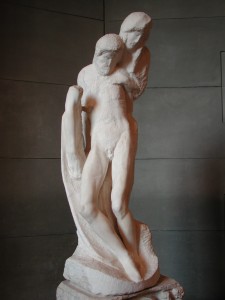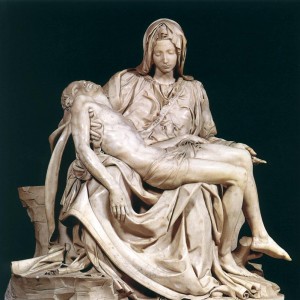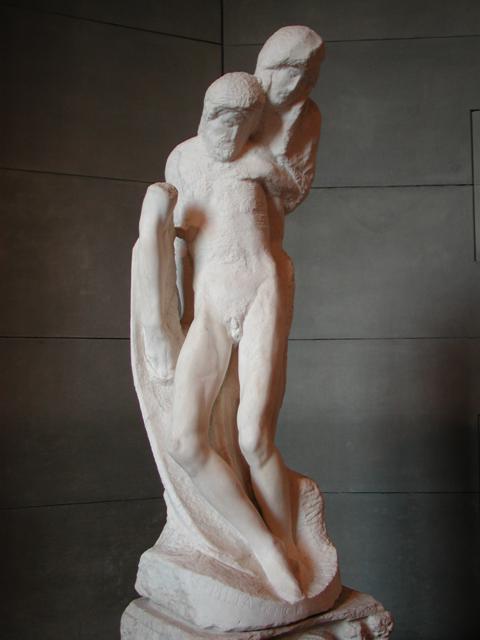The desire to simplify things must be present in everyone. It comes in time, when we realize our lives are finite. Time and again, the image of Michaelangelo’s Rondanini Pieta haunts me. I remember how I admired (I still do) his first Pieta, scuplted in 1499. It must be one of the most famous sculptures in the whole world, and probably one of the most beautiful ones, too. The difference between the two works, sculpted within decades of each other, is striking, as if they had been burn under the chisel of two different artists. And however much I admire and love his Pieta, I know that he was closer to the truth (or finding himself, or God, or call it whatever you want) than ever before, when he sculpted the latter.
 Underneath the stunningly smooth and detailed surface of the Pieta, the more truthful and evocative Rondanini Pieta lay dormant for fifteen years. The master of marble took his time, but before he died, he understood something profound. He peeled off the layers of vanity, of greed, of pomp, of riches, or artificiality, and reached the hot-cold core of existence, where resignation struggles with the innate desire to live, where pain mocks peace, and where we are all the same, regardless of our age, gender, or social status. Here there is no divine serenity, no perfection, no pathos, only chunks of rock, faceless death, and lasting strength. Here the Christ supports the grieving Mary, just like Mary holds Christ’s mortal coil.
Underneath the stunningly smooth and detailed surface of the Pieta, the more truthful and evocative Rondanini Pieta lay dormant for fifteen years. The master of marble took his time, but before he died, he understood something profound. He peeled off the layers of vanity, of greed, of pomp, of riches, or artificiality, and reached the hot-cold core of existence, where resignation struggles with the innate desire to live, where pain mocks peace, and where we are all the same, regardless of our age, gender, or social status. Here there is no divine serenity, no perfection, no pathos, only chunks of rock, faceless death, and lasting strength. Here the Christ supports the grieving Mary, just like Mary holds Christ’s mortal coil.
I, too, want to peel off layers, and simplify things. Clean them up, focus, chop off everything superfluous. And there is so much that is redundant in my life!
My novel, for example, contains paragraphs upon paragraphs of lovely, but superfluous frill. The vanity of a writer (or sculptor, painter, etc.) may lead them to the accolades of beauty for beauty’s sake – which makes us rejoice, but for how long? Until we see it, hear it, or feel it. When it’s out of sight, it’s forgotten. Yes, I love beauty. It’s one of the things that makes life bearable for me. But beauty is a treacherous ideal. Meriel may stare at the world and then try to paint them on her canvas, but eventually, she will have to realize how little all of that is worth. I guess that is one point of my novel, even if that point took seven years to become manifest from underneath all the endless yada yada.
I will get there. I must.




